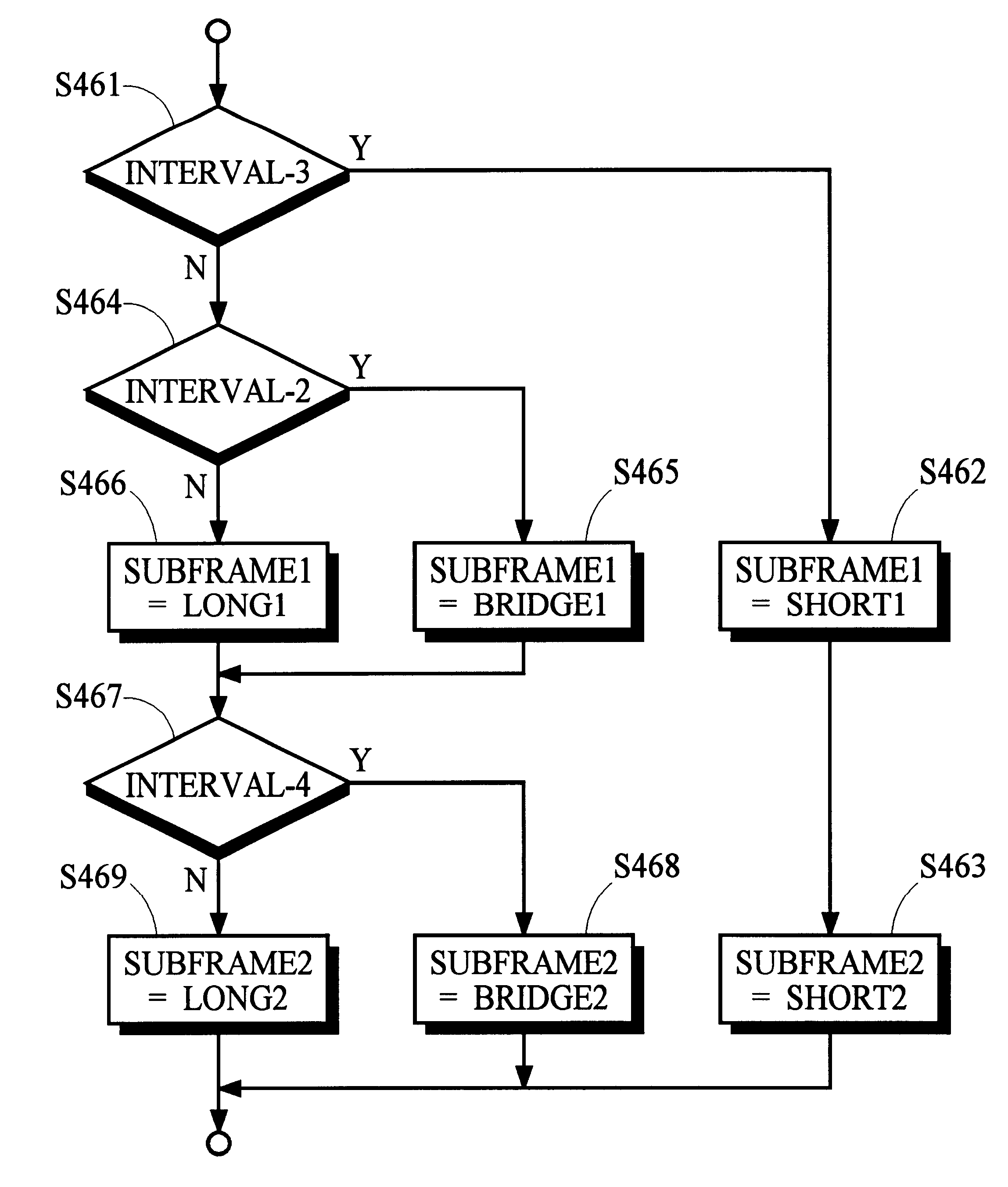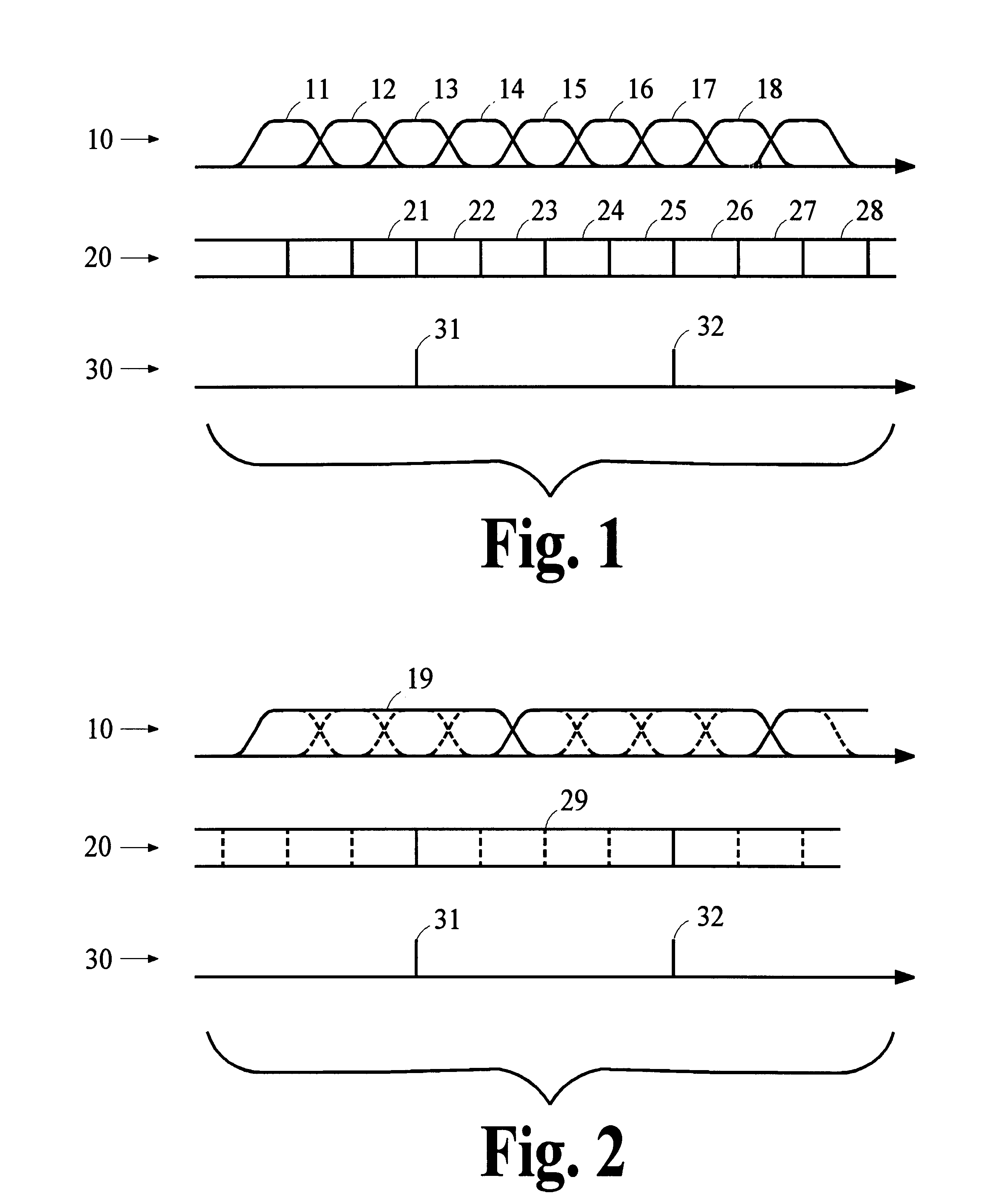Data framing for adaptive-block-length coding system
a data framing and block-length coding technology, applied in the field of data framing, can solve the problems of more difficult editing operations, more difficulty in editing audio information without creating audible artifacts in the processed, and more difficulty in editing operations, so as to avoid or at least minimize audible artifacts, control processing latency, and facilitate video/audio synchronization
- Summary
- Abstract
- Description
- Claims
- Application Information
AI Technical Summary
Benefits of technology
Problems solved by technology
Method used
Image
Examples
Embodiment Construction
A. Signals and Processing
1. Segments, Blocks and Frames
The present invention pertains to encoding and decoding audio information that is related to pictures conveyed in frames of video information. Referring to FIG. 1, a portion of audio signal 10 for one channel of audio information is shown partitioned into overlapping segments 11 through 18. According to the present invention, segments of one or more channels of audio information are processed by a block-encoding process to generate encoded information stream 20 that comprises blocks 21 through 28 of encoded information. For example, a sequence of encoded blocks 22 through 25 is generated by applying a block-encoding process to the sequence of audio segments 12 through 15 for one channel of audio information. As shown in the figure, a respective encoded block lags the corresponding audio segment because the block-encoding process incurs a delay that is at least as long as the time required to receive and buffer a complete audio s...
PUM
 Login to View More
Login to View More Abstract
Description
Claims
Application Information
 Login to View More
Login to View More - R&D
- Intellectual Property
- Life Sciences
- Materials
- Tech Scout
- Unparalleled Data Quality
- Higher Quality Content
- 60% Fewer Hallucinations
Browse by: Latest US Patents, China's latest patents, Technical Efficacy Thesaurus, Application Domain, Technology Topic, Popular Technical Reports.
© 2025 PatSnap. All rights reserved.Legal|Privacy policy|Modern Slavery Act Transparency Statement|Sitemap|About US| Contact US: help@patsnap.com



